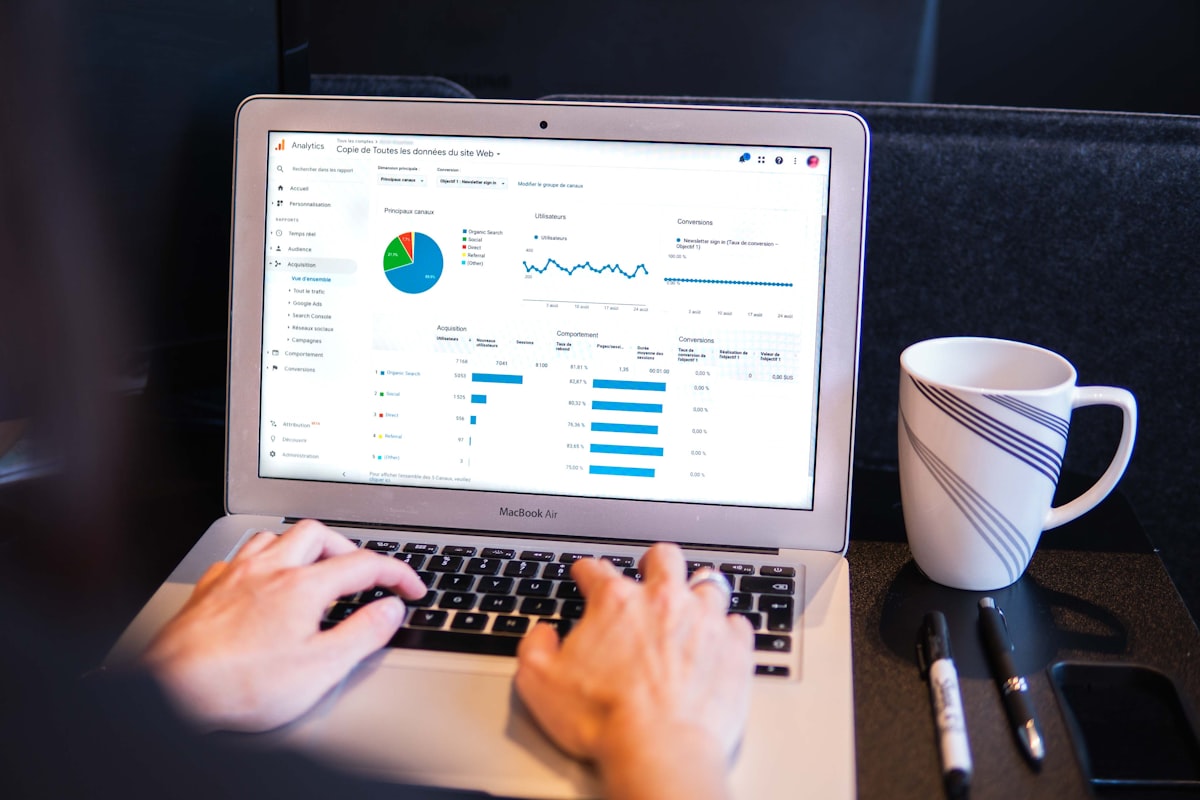Metric & Analytics for Landing Pages
In the final chapter of Landing OS, we'll discuss how to use metrics and analytics to improve the performance of your landing page and maximize results.

Read previous chapter

When it comes to creating successful online campaigns, key metrics and analytics are essential. Whether you're running a website or launching digital ads, understanding how people interact with your landing page will make all the difference in the success of your project.
When it comes to digital marketing, understanding how your landing pages perform is a must. That's where metrics and analytics come in—they can provide crucial insights into how customers interact with your website and what improvements you need to make. Knowing which strategies work best for you can help boost conversions, increase sales, and improve the overall success of your business.
In this article, we'll discuss how to use metrics and analytics to improve the performance of your landing page and maximize results.
Measuring Landing Page Success with Metrics and Analytics
When evaluating your landing page performance, four key areas should be monitored using metrics and analytics: traffic, engagement rate, conversion rate, and bounce rate. Tracking these metrics over time gives you an accurate picture of your landing page's success in converting visitors into customers.
Let's look at how metrics and analytics can help you measure the success of your landing page.
Metric# 1: Traffic
How many people visit your page? Measuring this metric helps you gauge the effectiveness of ongoing campaigns or promotions driving people to your website.
Traffic is an essential metric when it comes to landing pages and how successful they are. Without visitors, no one will be exposed to what you offer. Defining your total website traffic can be tricky, as several methods can be used when monitoring metrics.
Different tools like Google Analytics and Webmaster Tools are available to help track your success, signal areas of improvement, and help understand user patterns — allowing you to better estimate potential growth in the future. By keeping a close eye on your landing page's traffic flow, you can get an idea of where things stand and make tweaks accordingly. And before you know it, you'll have a highly optimized page ready!
Metric# 2: Engagement Rate
How long do people spend on each page? The longer they stay on a particular page or section, the more likely they convert into customers.
One key metric to track is the engagement rate when analyzing a website's performance. It's always nice knowing just how engaged your audience is with the content you've created for them! It captures how much time visitors spend on your landing page and how likely they are to take action. This information can allow you to spot areas of opportunity and strengths, so keeping an eye on your engagement rate is important if you want website visitors to hang around longer.
Metric# 3: Conversion Rate
How many people complete the desired action (e.g., buying a product or signing up for a newsletter)? This metric is essential because it tells you if your efforts are paying off.
The all-important conversion rate metric should be monitored and managed carefully. Every successful business needs to pay attention to this number on its landing page to maximize sales, nurture leads, and generate profits.
The landing page conversion rate essentially measures how many visitors are taking the desired action you've outlined--including completing a purchase or signing up for an email list. It's also useful for tracking results from marketing campaigns or A/B tests. Monitor your landing page conversion rate regularly and make sure you have concrete goals in mind when setting benchmarks - it'll help you achieve your long-term online marketing objectives!
Metric# 4: Bounce Rate
How many people leave after viewing only one page? If too many visitors are leaving without taking action, then it may be time to reassess the content on that particular page or tweak the design/layout of the site itself.
Bounce rate is one of the most important landing page metrics that businesses should consider. It's a great tool to measure the success of your page and understand how users view and interact with its content. A good bounce rate will indicate that visitors are engaging with your page, but if it's too high, you may want to adjust your content or design to grab their attention.
This metric can also provide clues about problems like slow loading times or traffic from non-targeted sources, which can result in an increased bounce rate. Keeping an eye on this metric lets you continually refine your content and ensure visitors have a positive experience when they land on your page.
Analytics Tools – What are They?
Howdy! Landing pages are essential for any business to have a successful online presence. Without them, you can't track conversions or measure potential performance. That's why an analytics tool specifically designed with landing pages in mind is such a great resource to have.
It will provide accurate data and insights on how your landing page is performing and help you identify areas where changes need to be made to better reach your target audience and maximize conversions. With one of these tools, you'll finally have the means to get ahead and make smart decisions about your business's online presence.
Analytics tools such as Google Analytics can provide detailed information about each of these metrics so that you can easily track them over time and assess how successful your landing pages are. It also allows you to monitor other factors such as geographic location, device type (desktop vs. mobile), referral source (Google Ads vs. social media), etc., which may also impact conversion rates. By tracking all of these elements together, you can gain valuable insights into what works—and what doesn't—for boosting conversions.
Conclusion
The key takeaway here is that measuring success isn't just about seeing whether or not visitors are completing their desired actions—it's also about understanding why they aren't doing so and making changes accordingly. With the right metrics and an understanding of what drives customer behavior online, marketers can ensure their campaigns are optimized for maximum success every time!
By leveraging market analysis tools like Google Analytics alongside data-driven marketing approaches such as A/B testing and customer segmentation, businesses can maximize their ROI from each campaign while delivering top-notch customer experiences across all channels—online and offline alike!

